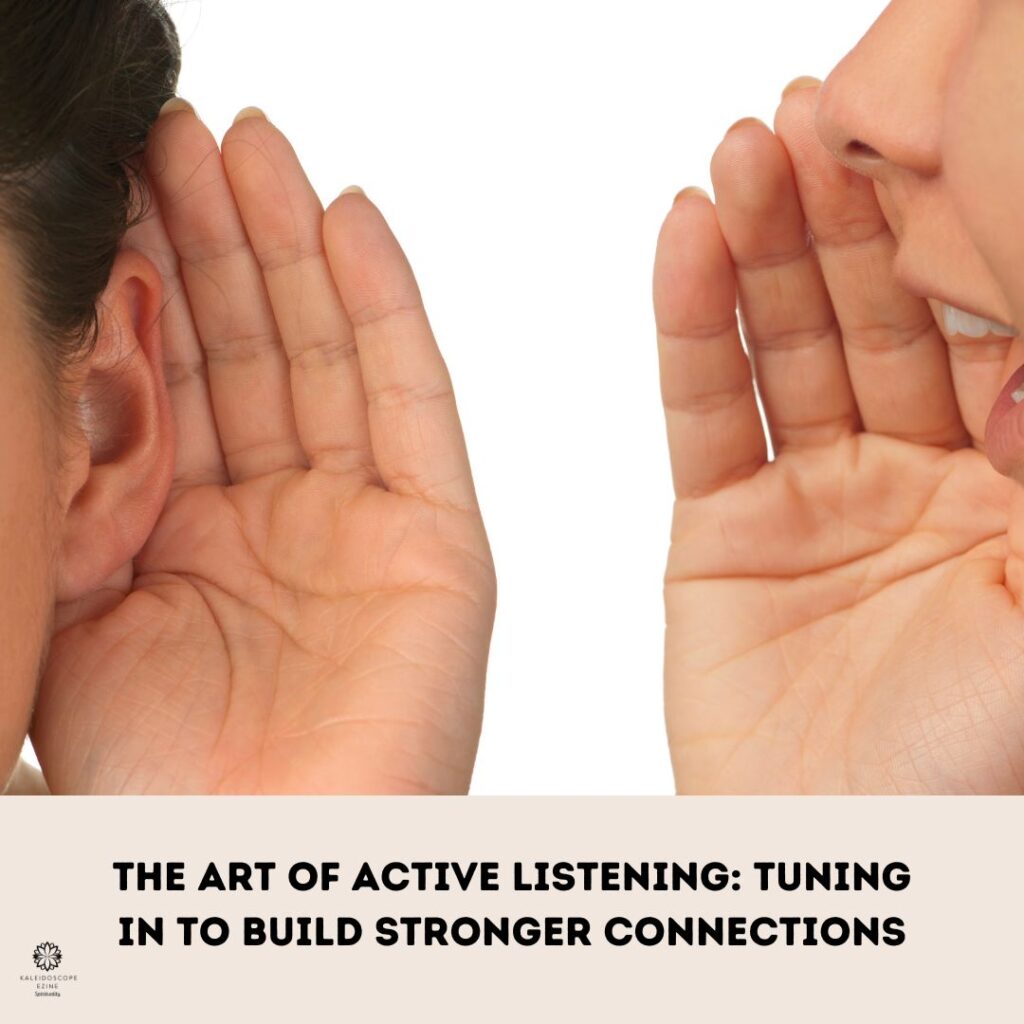Have you ever felt unheard in a conversation? You pour your heart out, but the response feels off-topic or dismissive. It’s a frustrating experience that happens more often than we realize. The culprit? Often, a lack of the art of active listening.
Active listening is the secret sauce of meaningful connections. It’s more than just passively hearing words; it’s about truly understanding the speaker’s message, both the spoken and the unspoken. Mastering this art can transform relationships, from casual friendships to work collaborations, and strengthen family bonds.
Why Active Listening Matters
Think about a time you felt truly understood. Maybe a friend listened patiently as you vented about a tough day, or a family member offered a supportive ear during a difficult decision. These moments of connection create a sense of belonging and support. Active listening fosters this by:
- Building trust: When you show genuine interest in someone’s thoughts and feelings, you create a safe space for them to express themselves openly. This builds trust and strengthens the relationship.
- Enhancing empathy: By actively listening, you can step into the speaker’s shoes and see things from their perspective. This fosters empathy, allowing you to connect on a deeper level.
- Improving communication: Active listening is a two-way street. By demonstrating good listening skills, you encourage others to do the same, leading to more effective communication overall.
- Resolving conflicts: When conflicts arise, active listening allows you to truly understand the other person’s point of view. This can pave the way for productive discussions and conflict resolution.
The Pillars of Active Listening
Active listening is a skill that can be developed with practice. Here are the key pillars to focus on:

- Be Fully Present: Put away distractions like your phone, silence internal chatter, and give the speaker your undivided attention. Make eye contact (but not in an intimidating way!), and turn your body towards them.
- Pay Attention to Non-Verbal Cues: Communication is more than just words. Notice the speaker’s body language, facial expressions, and tone of voice. A furrowed brow might indicate frustration, while a slumped posture could suggest sadness.
- Listen Without Judgement: Resist the urge to interrupt or formulate your response while the other person is speaking. Let them finish their thought before offering your perspective.
- Use Encouraging Responses: Show the speaker you’re engaged with verbal cues like “uh-huh,” “I see,” or “interesting.” Nodding and leaning in can also be helpful.
- Ask Clarifying Questions: Sometimes, what’s left unsaid is just as important as what’s spoken. Ask open-ended questions to get a deeper understanding of the speaker’s thoughts and feelings.
- Reflect and Summarize: Briefly paraphrase what you’ve heard to ensure you’ve understood the message correctly. This shows the speaker you were paying attention and allows them to clarify if needed.
Active Listening in Action: Putting Theory into Practice
Here are some everyday scenarios where active listening can make a world of difference:
- At Work: During a team meeting, actively listen to your colleagues’ ideas. Ask clarifying questions and acknowledge their contributions. This fosters a collaborative environment and ensures everyone feels valued.
- With Friends: When a friend is going through a tough time, practice active listening. Don’t offer unsolicited advice. Instead, let them vent, ask empathetic questions, and offer support.
- In Your Relationships: Active listening is crucial for healthy romantic relationships. Listen attentively to your partner’s concerns, and acknowledge their feelings. This strengthens emotional intimacy and creates a sense of security.
Beyond the Words: Active Listening for Different Personalities
People communicate in different ways. Here are some tips for adapting your active listening style to different personalities:
- The Talkative Friend: While a chatty friend might not require constant prompting, use encouraging nods and occasional summaries to show you’re following along.
- The Reserved Acquaintance: For someone more reserved, create a safe space by maintaining eye contact and using open-ended questions to gently draw them out.
- The Emotional Colleague: When a colleague is expressing strong emotions, practice active listening without judgment. Validate their feelings with phrases like “That sounds frustrating,” and offer support.
Active Listening: A Lifelong Journey
Active listening is a continuous learning process. There will be times when you get distracted or find yourself formulating a response too early. Don’t get discouraged! Simply acknowledge the slip-up and refocus on the speaker. With practice and patience, you’ll become a master of active listening, fostering deeper connections, and building stronger relationships in all aspects of your life.
Remember, active listening is a gift you can give to anyone. It shows respect, builds trust, and fosters genuine connection. Start practicing today, and watch your relationships blossom.


